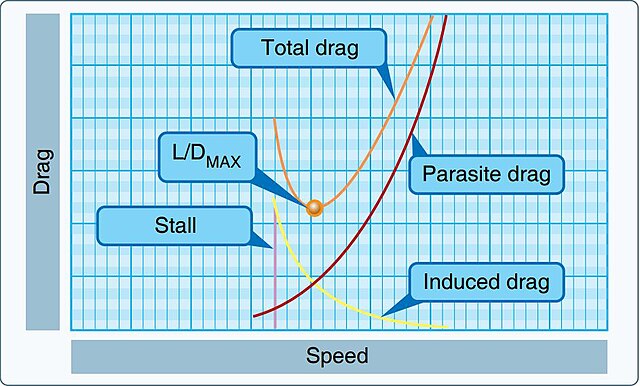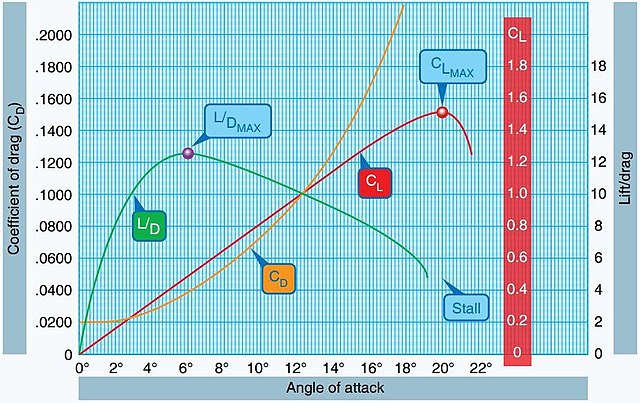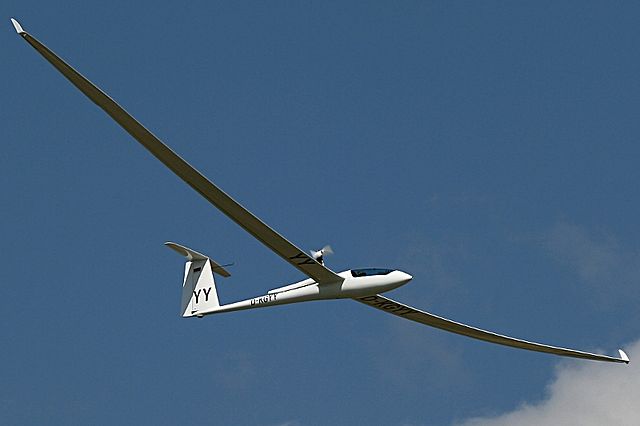The maximal total range is the maximum distance an aircraft can fly between takeoff and landing. Powered aircraft range is limited by the aviation fuel energy storage capacity considering both weight and volume limits. Unpowered aircraft range depends on factors such as cross-country speed and environmental conditions. The range can be seen as the cross-country ground speed multiplied by the maximum time in the air. The fuel time limit for powered aircraft is fixed by the available fuel and rate of consumption.
Maximum Endurance and Range versus airspeed. The maximum endurance condition would be obtained at the point of minimum power required since this would require the lowest fuel flow to keep the airplane in a steady, level flight. Maximum range condition would occur where the ratio of speed to power required is greatest. The maximum range condition is obtained at maximum lift/drag ratio (L/DMAX)
In aerodynamics, the lift-to-drag ratio is the lift generated by an aerodynamic body such as an aerofoil or aircraft, divided by the aerodynamic drag caused by moving through air. It describes the aerodynamic efficiency under given flight conditions. The L/D ratio for any given body will vary according to these flight conditions.
Drag vs Speed. L/DMAX occurs at minimum Total Drag (e.g. Parasite plus Induced)
Coefficients of drag CD and lift CL vs angle of attack.
The eta has the best glide ratio for a sailplane




